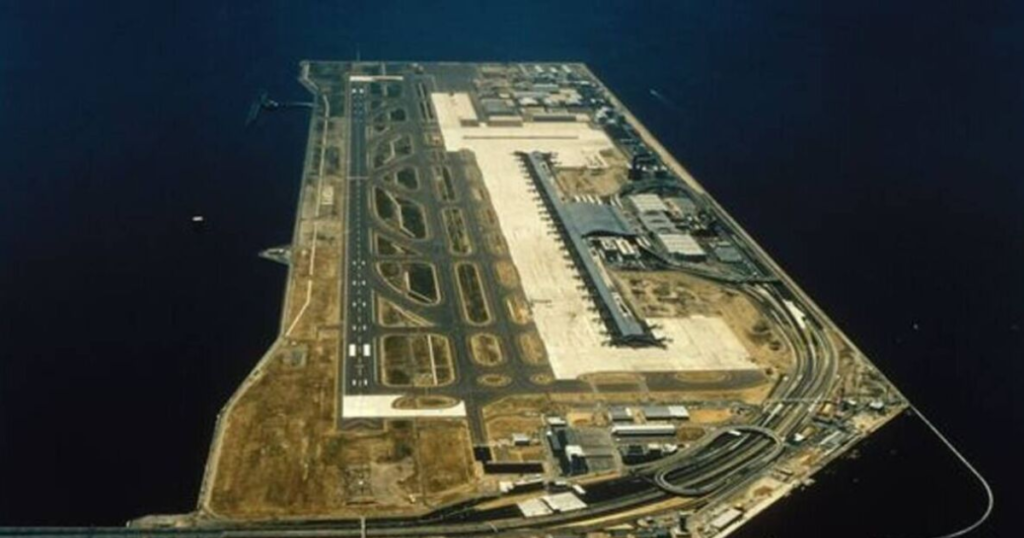Introduction
Japan has long been at the forefront of engineering marvels, pushing the boundaries of innovation to accommodate its growing infrastructure needs. One such ambitious project was the creation of a floating airport, a grand vision meant to address space constraints and environmental concerns. However, despite its promise, this ambitious endeavor ultimately faced insurmountable challenges, leading to its downfall. This article delves into the story of Japan’s doomed floating airport, exploring its conception, construction, and eventual demise.
The Vision Behind the Floating Airport
In the late 20th century, Japan’s rapid economic growth and increasing air traffic demanded new aviation infrastructure. Traditional land-based airports faced constraints due to Japan’s mountainous terrain and dense urban centers. To overcome these challenges, engineers proposed the concept of a floating airport—an offshore aviation hub built on artificial platforms. The idea was revolutionary, offering numerous advantages:
- Space Efficiency: It freed up valuable land for other developments.
- Noise Reduction: Offshore placement minimized noise pollution for urban areas.
- Environmental Considerations: It reduced the need for land reclamation, a process that can damage ecosystems.
- Expansion Potential: Floating airports could be easily expanded or relocated if needed.
Construction and Challenges
The floating airport concept led to the development of several ambitious projects, including the famous Kansai International Airport (KIX). Built on an artificial island in Osaka Bay, KIX was heralded as a modern engineering marvel. However, a more radical floating airport project was planned as an extension of this success.
Despite initial enthusiasm, several significant issues arose:
- Structural Instability: Floating platforms proved difficult to anchor against strong waves, earthquakes, and typhoons.
- Financial Overruns: The cost of maintaining such a facility skyrocketed beyond initial estimates, making it economically unviable.
- Technological Limitations: The technology required to make a fully functional floating airport safe and efficient was not yet advanced enough.
- Public and Governmental Pushback: Concerns over long-term viability and environmental impact slowed down funding and approvals.
- Sinking Issues: Even Kansai International Airport, which was built on reclaimed land rather than a floating platform, suffered from ongoing subsidence, casting doubt on the feasibility of a fully floating design.
The Abandonment of the Project
With mounting costs, engineering setbacks, and concerns over long-term sustainability, the floating airport project was eventually shelved. The failure of the initiative serves as a cautionary tale of how even the most ambitious technological dreams can falter under real-world constraints. The Japanese government redirected its focus to improving existing airports and investing in high-speed rail networks to alleviate air traffic congestion.

Legacy and Lessons Learned
Although the floating airport was never fully realized, its research contributed valuable insights into offshore construction and aerodrome engineering. Kansai International Airport remains operational, albeit with its own issues, such as continuous sinking of the artificial island. The doomed floating airport, however, serves as a reminder that innovation must be balanced with practicality.
Several key lessons were learned from the experience:
- Infrastructure projects must account for long-term environmental impacts.
- Advanced engineering solutions require sustainable financial backing.
- Ambition should be tempered with real-world feasibility studies.
- Adaptability is crucial when dealing with unpredictable natural conditions.
Could Floating Airports Still Become a Reality?
While Japan’s doomed floating airport failed, the concept itself has not been entirely abandoned worldwide. Countries facing similar land constraints, such as the Netherlands and Singapore, continue to explore the feasibility of offshore aviation hubs. With advancements in marine engineering, autonomous infrastructure, and climate-resistant design, the possibility of a functional floating airport remains within reach. However, future projects must learn from Japan’s experience to avoid repeating the same costly mistakes.
Conclusion
Japan’s attempt at building a floating airport was a bold and visionary effort that ultimately succumbed to economic, environmental, and engineering hurdles. While the concept remains an intriguing possibility for future developments, this project highlights the complex interplay between ambition and feasibility in large-scale infrastructure projects. Perhaps one day, with advancements in technology, floating airports may become a reality—but for now, Japan’s doomed project remains a fascinating chapter in the history of aviation engineering.


